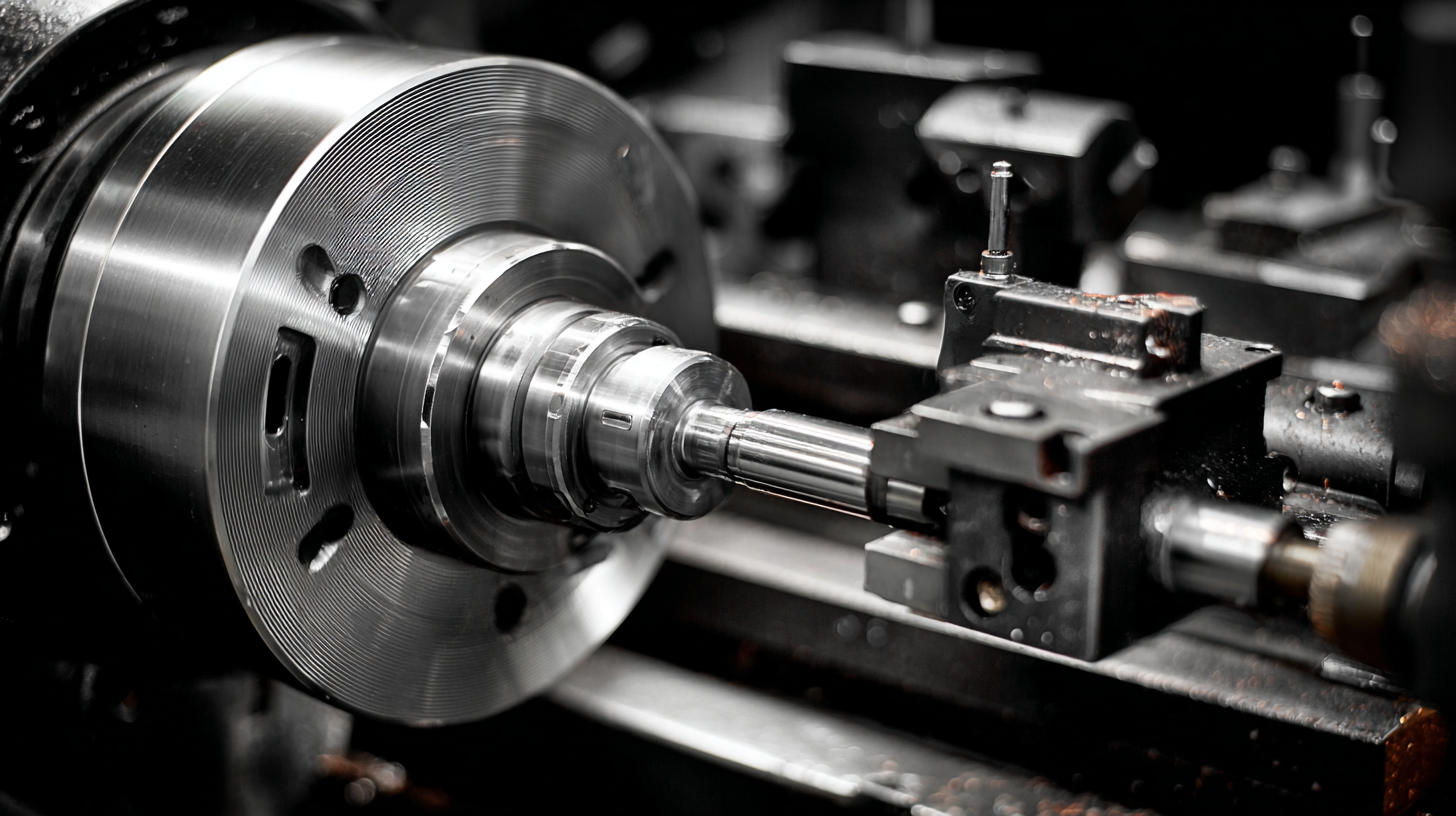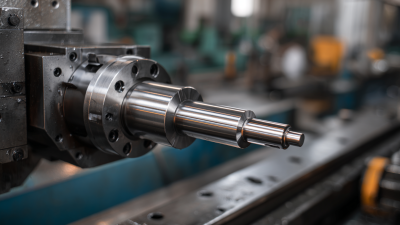
- sales@bjbod.com
- Mon - Sat at 7:00AM to 9:00PM

Selecting the appropriate tooling for lathe machines is critical to enhancing machining efficiency and achieving high-quality results. According to a report by Grand View Research, the global machine tools market is expected to reach USD 110.39 billion by 2025, indicating a growing demand for precision and productivity in manufacturing processes. Choosing the right tooling for lathe not only affects the durability and performance of the machine but also has a direct impact on production costs and turnaround times. A well-selected set of cutting tools can lead to longer tool life, reduced cycle times, and improved surface finish, ultimately driving overall operational success. As manufacturers continue to prioritize efficiency, understanding the nuances of tooling for lathe applications becomes paramount in maintaining a competitive edge in the market.

When selecting tooling for lathe machines, several key factors must be taken into account to ensure optimal performance and efficiency. First and foremost is the material of the tooling. Tungsten carbide tools are widely favored for their hardness and durability, making them ideal for various machining applications. As the global carbide tools market is on track to grow significantly, understanding the specific needs of the job at hand can help in choosing the right materials that complement the lathe's capabilities.
Another critical aspect is the compatibility of the tooling with the lathe machine. It is essential to consider the machine's specifications, including its size, speed, and type of operations. Proper alignment of the tooling to the lathe's parameters can lead to improved precision, reduced wear, and increased production rates. Additionally, factors such as ease of installation and changeover times should also be considered, especially when optimizing workflows and minimizing downtime. By evaluating these factors carefully, operators can enhance productivity and maintain a competitive edge in the evolving machining industry.

When selecting tooling for lathe machines, understanding the different tool materials and their applications is crucial to achieve optimal performance and longevity. High-speed steel (HSS) is a common choice due to its resistance to abrasion and ability to maintain a sharp edge. HSS tools can withstand high temperatures generated during cutting, making them ideal for applications requiring precision and durability. They are particularly effective for general-purpose machining and can be sharpened multiple times, extending their useful life in a workshop.
Another material worth considering is carbide, which is renowned for its hardness and wear resistance. Carbide tools can handle greater speeds and feed rates, making them suitable for high-volume production and machining harder materials. These tools exhibit excellent performance in shaping, turning, and milling tasks. Additionally, coated carbide tools, with coatings such as titanium nitride, further enhance performance by reducing friction and increasing tool life. Overall, selecting the right tooling involves matching the material properties with the specific requirements of your machining tasks to ensure efficiency and precision.
When selecting the right tooling for your lathe machine, analyzing tool geometry becomes crucial, particularly the importance of angles and shapes. Tool geometry directly affects the efficiency of the machining process, influencing factors such as cutting speed, surface finish, and tool wear. The angles of cutting tools, including rake, relief, and cutting angles, play a vital role in how the tool interacts with the workpiece material. For instance, a positive rake angle can reduce cutting force and improve chip flow, while a negative rake angle may enhance tool strength but could lead to increased friction and heat.
Moreover, the shape of the tool also impacts its performance. Different shapes are designed for specific operations, whether it’s turning, facing, or threading. A well-designed tool shape ensures optimal contact with the material, which is essential for achieving precise dimensions and tolerances. Therefore, understanding the geometric relationship between tool angles and shapes and their effect on machining outcomes is fundamental for selecting the appropriate tooling, ultimately leading to enhanced productivity and quality in lathe operations.
When selecting the right tooling for your lathe machine, evaluating the compatibility of tooling with various lathe types is critical. Different lathe machines, such as CNC lathes, manual lathes, and turret lathes, have distinct operational parameters and tooling requirements. Understanding these differences allows machinists to choose tooling that not only fits but also enhances the performance of their lathes. For instance, the tooling must align with the lathe's capabilities, like spindle speed and torque, to achieve optimal cutting efficiency and precision.
Assessment of tooling compatibility can be likened to the evaluation of genetic compatibility in biological studies. Just as certain gene segments can exhibit compatibility traits across different species, tooling must also demonstrate compatibility with various lathe configurations. Identifying the best-fitting tools is essential for maximizing productivity and minimizing wear and tear on both the tools and the machine. By conducting thorough evaluations akin to those seen in studies assessing compatibility across diverse contexts, machinists can streamline their operations and ensure high-quality outcomes in their machining projects.
This bar chart illustrates the compatibility of different tooling types with various lathe machine categories. It helps in selecting the appropriate tooling for enhanced performance.
Coating technologies have emerged as a cornerstone of modern industrial innovation, offering unparalleled capabilities to enhance tool performance in lathe machining. The application of advanced coatings enables tools to endure extreme wear, heat, and chemical reactions, significantly extending their lifespan and reducing the frequency of tool changes. This not only improves productivity but also minimizes operational costs associated with downtime and tool replacement.
In the quest to select the right tooling for lathe machines, understanding the different types of coatings available is essential. These coatings, such as titanium nitride and carbide-based variants, are designed to reduce friction and increase hardness, allowing for smoother cutting processes. Furthermore, specialized coatings can be engineered for specific materials and applications, ensuring optimal performance tailored to the demands of various machining tasks. As a result, investment in the right coating technology can lead to considerable advancements in machining efficiency and output quality, empowering manufacturers to meet competitive market standards.






